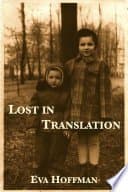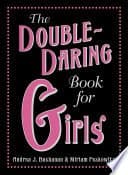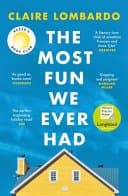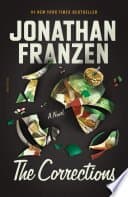Exploring the Relationship Between Humans and Nature Through Literature
<p>Dive into essential reads that unravel the intricate bond between humans and nature, examining themes of coexistence, exploitation, and symbiosis. </p>

Books Featured in This Article
Explore the books discussed
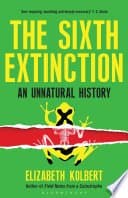
Exploring the Relationship Between Humans and Nature Through Literature
The relationship between humans and nature has always been profound and complex. From scientific texts to philosophical essays and fictional novels, literature has long been a powerful medium to explore this intricate bond. These books help us understand how our interaction with other species and the environment has evolved over time. This article delves into a selection of essential reads that highlight the themes of coexistence, exploitation, and symbiosis.
Scientific Perspectives: History and Philosophy
The Sixth Extinction by Elizabeth Kolbert provides an insightful look into the impact humans have had on other species and the environment. Kolbert combines rigorous scientific research with compelling storytelling, discussing the catastrophic impact of human activity on biodiversity.
“It’s estimated that 30,000 species are driven to extinction each year by human activities. This number is not merely staggering; it is incomprehensible.” – Elizabeth Kolbert, The Sixth Extinction
Kolbert's work is an essential read for anyone interested in scientific and philosophical explorations of the human-nature relationship. It offers valuable insights into how the actions of humans have led to a rapid decline in biodiversity, urging us to rethink how we interact with our environment.
Impact of Human Activities
Another remarkable read is Silent Spring by Rachel Carson. This groundbreaking book historically altered the course of environmental science by shedding light on the harmful effects of pesticides on the environment and human health. Carson's meticulous research and compelling narrative opened the world's eyes to the dire consequences of human intervention.
“In nature, nothing exists alone.” – Rachel Carson, Silent Spring
Carson's work serves as both a warning and a source of inspiration. It calls for heightened environmental awareness and urges us to adopt more sustainable practices to protect our planet.
Philosophical and Artistic Exploration
Philosophy and art have long reflected the human-nature dichotomy. One timeless piece is Walden by Henry David Thoreau. In this masterpiece, Thoreau's reflections on simple living in natural surroundings highlight the philosophical underpinnings of our relationship with nature.
“I went to the woods because I wished to live deliberately, to front only the essential facts of life.” – Henry David Thoreau, Walden
This book not only provides an introspective look at solitude and independence but also critiques our modern life's complexities and our disconnection from the natural world. Thoreau's eloquent prose inspires readers to consider deeper, more intentional ways of living.
Fictional Narratives
Novels have also explored these themes in profound ways. Prodigal Summer by Barbara Kingsolver weaves together the lives of various characters who are deeply connected to the natural world. The novel emphasizes themes of interconnectedness and the impact of human actions on the environment.
“There is no privacy for the whispering of leaves, the muttering of grasses, the sighing of wind. This is their domain. Human presence is inconsequential.” – Barbara Kingsolver, Prodigal Summer
This fictional narrative frames the human-nature relationship in a deeply personal and emotional context, offering a unique perspective on how we coexist with other species.
Nature in Art and Culture
The depiction of nature in art and culture is richly explored in Braiding Sweetgrass by Robin Wall Kimmerer. This book blends indigenous wisdom, scientific knowledge, and the teaching of plants. Kimmerer's essays reflect a profound respect for nature and offer a narrative that marries science with indigenous cultural practices.
“The land knows you, even when you are lost.” – Robin Wall Kimmerer, Braiding Sweetgrass
Kimmerer's work invites readers to rethink their relationship with the natural world. It emphasizes a reciprocal relationship, where humans are seen as part of the ecosystem, not separate from it.
In sum, whether through scientific, philosophical, or fictional lenses, books that explore the human-nature relationship enrich our understanding of our place in the world. They inspire us to consider more harmonious ways of living with the natural world, promoting a deeper bond and a greater sense of responsibility towards the environment.
About the Author

Book Junkie
Your go-to source for book reviews and recommendations.
You Might Also Like
Related Books
Related Articles

Transformative Reads for Teens: Navigating Life at 17
Discover the power of literature with our curated list of essential books for 17-year-olds. From fiction that inspires self-discovery to empowering non-fiction, these reads provide guidance and comfort during the tumultuous teen years. Uncover the wisdom

Unlocking the Secrets of Dark Academia: A Must-Read List
Dive into the enchanting realm of dark academia with our curated list of gripping novels that explore obsession, psychological intricacies, and haunting atmospheres. Perfect for readers seeking literary adventures akin to films like *Kill Your Darlings* a

Unlocking New Chapters: Inspiring Books for Readers in Their 50s
Discover a curated list of transformative fiction and non-fiction books designed for readers in their 50s. Embrace change, find inspiration, and celebrate life's possibilities with these insightful reads.

Unlocking the Secrets of Monastic Life: 12 Novels Rich in Religious Intrigue
Dive into the captivating world of ancient monasteries and religious power struggles through our curated selection of novels. Discover tales that will enrich your understanding of history while satisfying your love for literary intrigue.
